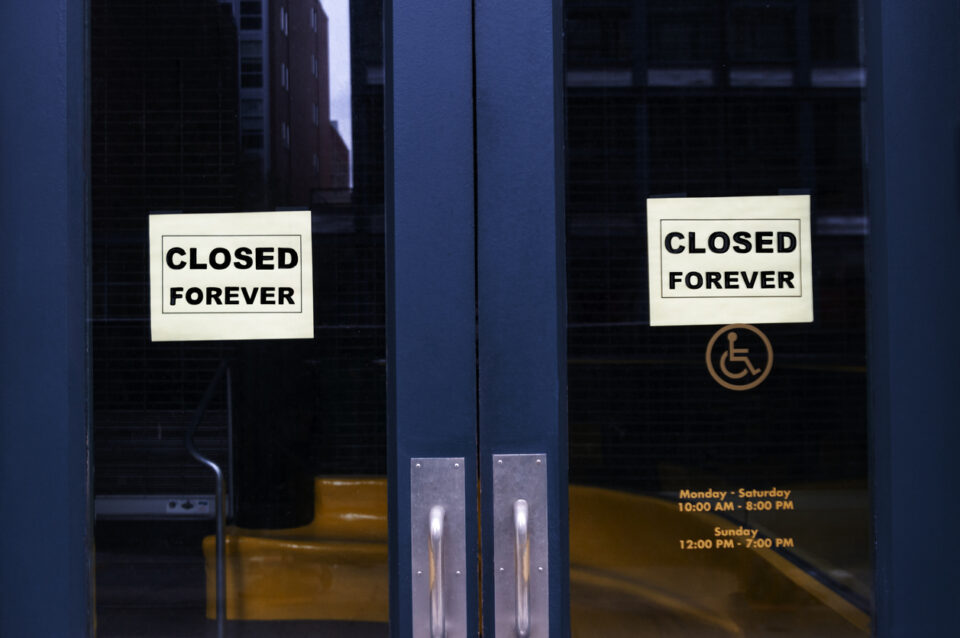The Impact of COVID-19 on Retail Market
Date
June 22, 2020
Read Time
4 minutes
Share

Authored by Marc Fenton
What do the following retailers have in common: Tuesday Morning, J.C. Penny, Stage Stores, Aldo, Nieman Marcus, J. Crew, Roots, True Religion, Modell’s Sporting Goods, Art Van Furniture and Pier 1? They are some of the 14 retailers who have filed for bankruptcy so far in 2020. Of the stores mentioned, only Modell’s, Art Van Furniture, and Pier 1 were not COVID-19 related filings since their filings occurred earlier in the year.
Depending on your business, vendors, and sources of revenue, the changing landscape described below may have a significant impact on your short- and long-term strategies as well as your bottom line.
In 2019, 17 major retailers filed for bankruptcy, and for some, it was their second filing (Payless, Gymboree, and Charming Charlie). This year’s filings will surpass the 2019 filings. Depending on the state of the economy and consumer shopping habits, to name a few criteria, an increasing number of your favorite retailers may seek bankruptcy protection by the end of the year.
Pre-COVID, and for many retailers, store closures during the fourth quarter of 2019, created an immediate need for cash and liquidity. Companies that were highly leveraged or were going through a cash crisis because of declining sales were placed in a precarious financial position jeopardizing their ability to remain competitive. Faced with doubts about the economy and the changing pattern of retail shopping habits, many retailers decided to reassess how they did business and how many physical locations were necessary to maintain their profitability and workforce size. At the beginning of 2020, the result of this assessment led many to seek relief under Chapter 11 of the Bankruptcy Code and try to reorganize.
Several months into the new year, COVID-19 struck worldwide. Governments issued mandatory stay at home orders. Retailers who previously suffered financial issues were now placed in a position where their stores and/or malls were closing. They were losing revenue and foot traffic, were unable to pay wages and salaries and were unable to pay rent due to the sudden loss of an income stream. The retailers mentioned took a proactive approach and opted to file for Chapter 11, so they could revise their business model and try to stay competitive in a new market. Others who had filed for bankruptcy prior to COVID-19 suddenly found themselves unable to conduct court-ordered going out of business sales due to stay at home orders. For some, like Modell’s and Art Van Furniture, the Chapter 11 process would not be successful, and they would have to close their stores and liquidate.
Financial issues facing retailers have not been resolved yet. As we transition to new governmental phases and begin to emerge from quarantine, how will retailers respond? How will consumers respond? Will e-commerce continue to flourish, or will foot traffic increase at stand-alone retailers or in malls? Based on their end of year 2019 financials, the financial impact from COVID-19 and the changing pattern of shopping to more of an e-commerce model, many retailers have begun closing some of their brick and mortar locations, including Bath & Body Works (50 locations in the US), The GAP (230 locations in next two years), Victoria’s Secret (250 locations in the US and Canada), Zara (1000 to 1200 stores in next two years), Macy’s (125 stores in next three years), Nordstrom’s (16 department stores plus its Jeffrey designer apparel stores), Bose (close all 119 stores worldwide), Guess (close 100 stores in North America and China over eighteen months) and Starbucks (will close up to 400 company-owned stores in the US and Canada over the next eighteen months).
These closings will change the retail landscape. Many of these retailers are anchor stores in malls across the US. With anchor stores closing, how will that affect foot traffic in the malls, and what will be the residual effect for other stores within that location? As we move forward through 2020, those retailers who had strong balance sheets and were well-branded may survive unscathed. Those who had weak balance sheets may be forced into bankruptcy, whether through reorganization or liquidation. Your local retail mall may become a shell of what it was pre-COVID-19.
Your shopping habits may not change back – even after we are (hopefully) done with COVID-19.
The bottom line, the retail landscape is quickly evolving and in significant ways. Like everything else COVID-related, the more you know, the better you can plan.
For more resources and LP's response to COVID-19, visit this webpage.